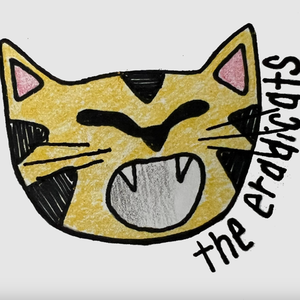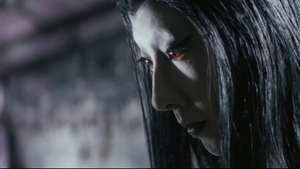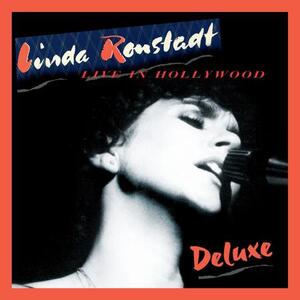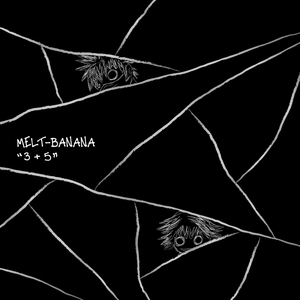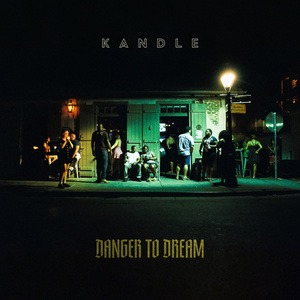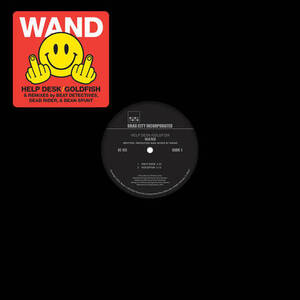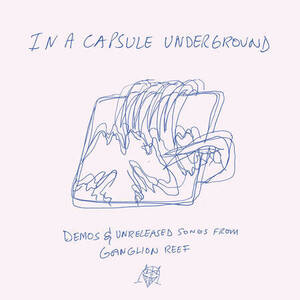The Blair Witch Project
Shad Clark
In October of 1997, five independent filmmakers set out to create the only film they felt financially feasible.
“blair_witch”
Two years later, their footage is hailed to be redefining the entire horror genre.
Such praise is certain to raise audience expectations and such expectations are often difficult to live up to. Overhyping, after all, is an enemy many movies seem to be sleeping with these days. Having seen a screening of The Blair Witch Project , however, I’m confident this feature is worthy of the rave reviews and whirlwind industry buzz that’s launching the founders of Haxan Films into the media spotlight. Privileged, I was, not only to see this movie but also to meet its makers.
••
Who started this whole thing?
Ed Sanchez : It was Dan [Myrick] and I. We came up with it in ‘93, when we were in film school. We went on and did other things for three or four years. Then, in ‘96, we kind of got the ball rolling again, and got Gregg [Hale] involved. Then, Mike [Monello] and Rob came on. We shot it in October ‘97. And here we are at the Florida Film Festival.
One of the things you did prior to this was Gabriel’s Dream …
Ed : Yeah, I did that.
Whatever happened to that?
Ed : It went nowhere. We entered it into a couple [of] little film festivals, and it won a few little awards. Basically, I was 22 years old when I wrote and directed it. It’s a real immature film. I think we all kind of went through something like that. Gregg went through a similar major thing in his life… where you knew you poured your heart into something and it just completely turns out to be a piece of garbage. Not that our films are pieces of garbage. I don’t think Gabriel’s Dream is a piece of garbage. I don’t think Gregg’s film is a piece of garbage, either. We over-estimated our talents. And maybe we didn’t put enough energy into the script or maybe into the casting and different things. And we thought this vision was going to come through even though you weren’t doing things the way you were supposed to be doing them. So it was a big lesson for us and I’m glad it happened. I’m glad it happened before Blair than after. You have to be realistic about your filmmaking abilities. None of us here are Stanley Kubrick or Stephen Spielberg. We might be able to make really good films later on. Later on in our careers, we might take on some really challenging films. For now, we’ll just make the films we know we can make and build one film at a time. It’s really important to us to be realistic about what we can and can’t do.
Gregg Hale : I think the best thing to come of the success that Blair is having and hopefully will continue to have is that it’s going to allow us to make more movies. It’s kind of cliched, but clichés become clichés because there’s a basic truth in them. We really just want to make movies, and that’s all we’ve ever wanted to do. Now, it’s looking like we can realistically look at our lives and say, “We’re going to be making movies.” At least for a little while… until we screw up so bad they won’t let us do it again.
Did Artisan seek you out after seeing a screening of Blair ?
Gregg : We got really lucky. We hooked up with an executive producer, Kevin Fox, who is a really experienced independent film producer and business guy. He understands all the little nuances of how you get a film to be successful that none of us had a clue about. One of the first things he did after he got involved was get us a publicist – and a really good publicist, Jeremy Walker, from Klein and Walker of New York. And having a publicist helped us get into Sundance, and helped, once we got into Sundance, let everybody know that we were in Sundance. So we started getting phone calls from distributors before anybody had even seen the film. Then, we signed an agent – again, through Kevin – that’s like a really hot agency in Los Angeles. They orchestrated the whole thing so that our signing was like a mini-news event in and of itself. And it added a buzz. They took three of their top agents and flew them to Orlando. Because it’s such a little inbred community in Los Angeles, word of that gets around really fast. “Oh, my gosh! Endeavor sent out their three top guys to meet these goofballs in Orlando! Who are they?!” So it kind of built on that. All of a sudden, without anybody seeing this film, it was this commodity that people wanted. I think that contributed a lot to having everything set up where we actually sold the film after the first screening.
Ed : At Sundance.
Gregg : Yeah. At Sundance, where these people who specialize in this had created this little feeding frenzy before anybody knew anything.
Ed : Before anybody had even seen the film.
I’ve heard – and I don’t know if this is true… I’ve heard you just gave the three actors the cameras and the DAT recorder and sent them out into the woods. Then, you would go out and basically just scare them.
Ed : Yeah. That’s basically what we did. It’s a lot more complicated than that but… yeah. We planned everything that was going to happen to them. We orchestrated this little play – this little world – around them. Basically, it was like an eight day play that they were in. They were just shooting it.
Gregg : Without knowing what was going to happen.
Ed : Or when it was even going to end.
Gregg : Exactly.
Ed : We just gave them the directing notes in little canisters. We tried to keep the contact with them as minimal as possible. They’d get these directing notes and know maybe one or two scenes in advance. We kept it vague enough where they could get there and do everything right, but not give away what we were going to do to them. Like the scene where they come across the stickmen… Mike was in charge of leading them that day. We just put in there: “Go into the woods and look for something in the trees.” It was only him, so he went in there to look for these things, saw them, and then called [Heather and Josh] over. And the other two, when they came over, that was actually the first time they’d seen it. That was the first time Mike had seen it.
Gregg : When you see it on tape, that’s them actually seeing it for the first time. There was just luck involved. I don’t know if you remember or not, not having seen it 317 times like us, but when she first sees a stick figure and it pans up to this great shot of the nicest –
Ed : The huge one.
Gregg : This nice huge stick figure with a backlight on it. Just lucky. There was a lot of luck involved with The Blair Witch Project .
Was a lot of the dialogue improvised then?
Ed : Everything was.
Gregg : Everything.
Ed : All the dialogue was improvised. We just didn’t want to put any restraints on them… having to say certain words, having to say phrases a certain way.
Gregg : We didn’t want them to have to think.
Ed : The characters’ names were their own names. We just wanted them to be able to go down to the basics.
I was going to ask about that, too. I couldn’t find any other names for any of them anywhere, but I wasn’t sure…
Ed : That’s them.
Gregg : Part of their contracts was that we get to use their real names. They provided us with real photos of them[selves] as kids. We just shot a one-hour special for the SciFi Channel which is like a documentary as if the Blair Witch was real. And we really flew down Mike’s brother from New York to play Mike’s brother. Actorwise, obviously with a thing like this, the whole actor selection has been incredible. We saw 2,000 people before we cast the three that we ended up with. We’ve learned a lesson about non-actors – especially with this documentary stuff – and we’ve used mostly non-actors in roles.
All the townspeople in the beginning?
Gregg : Yeah. They’re all either planted non-actors or they’re people they just came upon in the street. Like the one lady with the kid…
The kid covering her mouth…
Gregg : She did that on her own.
Ed : That was the Blair Witch.
Gregg : We don’t know why the lady would’ve made up that story and played along like that, but she did. Thank God we had a release from her on video, because we haven’t been able to find her. That woman doesn’t even know she’s in the film.
Ed : People are going to come up to her and say, “Hey, I saw you in a movie the other day.” She’s going to say, “What?!”
I was wondering if those were just people they ran into, ‘cause a lot of it just seems so genuine.
Ed : That old man… and the woman are real.
Gregg : We tracked him down, though.
Ed : The rest were mostly just people I knew. My sister’s in there. A guy I used to play softball with, he’s in there as one of the fishermen. Then, I got some help from a woman who cast in Maryland. I told her what I needed and she helped me find some people.
Gregg : We put up flyers. We needed help desperately. We put up flyers at the universities and stuff. The only person who called was Mary Brown. We met her, and she did some art department stuff. After spending a day with her, our art director/production designer Ben Rock was like, “Dudes, this is Mary Brown.” Oh, her name is really Patty Decou.
Ed : First, stories started coming back about how weird she was.
Gregg : Right. Right. Right.
Ed : Then, it became apparent that she was [the character] Mary Brown.
Gregg : And the house is really hers. That’s really her gate. I think that adds. Plus, you’ve got this element… I don’t know how it works but I think there’s some way a medium – whether it be video or film or whatever – is somehow infused with the energy that went into making it. Like Apocalypse Now … I think a lot of the reason Apocalypse Now works is because of the total insanity that went into making it. Somehow, that’s on the film and you get that when you’re watching it. You know, subconsciously. The same thing is true of Blair . You take these kids… At the time, I was so caught up in what we were doing. I didn’t think about it. They had to be kind of freaked. They get their asses on a bus. They take the bus down to Maryland.
Ed : They don’t know each other.
Gregg : They don’t know us. And we’ve already told them, “We’re going to take you into the woods and torture you.” That’s what we told them from the very beginning. “We’re going to take you into the woods and try to break you. That’s what we’re going to try to do.” So they’re coming down here. They’re going to have to learn to be filmmakers. They’re going to go out and do all this crazy shit.
Ed : They don’t know what’s going to happen to them. They don’t know the story. They have certain clues from the callbacks, ‘cause we did a few scenes from the film for the callbacks, just to get their reactions. But they don’t know what’s going to happen to them. They know they’re going to go out into the woods and get lost. Other than that…
Gregg : And they don’t know who they’re supposed to be acting with. Like the people on the street… they didn’t know who was real and who was an actor. When they go to Mary Brown’s house, they don’t know. Is it Mary Brown’s house or is it a set? I think their freaked out energy is kind of what makes Blair work. We were part of it, too. It was totally insane for us. We basically took all the money that we had plus our credit cards and invested it into the time and materials for the film. And we turned it over to these guys and sent them into the woods. Then, all we’re doing is just trying to keep up.
••
At this point, the friendly neighborhood publicist rolls up, tapping her watch to illustrate lapsed time. Some other journalist from some other paper is to inherit my interviewees whilst I inherit his. Sort of like playing musical filmmakers, if you will.
••
What about the mythology? How extensive will that become? Do you think you could do too much and take something away from the film?
Dan Myrick : I think you always run that risk. You have to walk the line between looking like you’re milking the whole thing… The approach we’re taking with all this [peripheral] stuff is, I think, complimentary to the film. The book – which I think is very cool – is an investigative approach from one of the private investigators. The comic book is more about the mythology, the past events that took place out in the Black Hills areas. There are a lot of different areas due to the world that all of us created that you can explore. And that’s all that these are: just little explorations in these different areas of the mythology. Much like Star Wars or Star Trek or something like that, you can go into all these different directions. Some techies love books about all the blueprints of all the spaceships and stuff like that, which really has nothing to do with the film… outside the fact that there are spaceships in the film. I think it’s fun. As long as there’s a demand for it and people are excited about the film and you can sell books, why not?
Mike Monello : I think that’s key. As long as it’s “fun.” Especially in the case of the book and the special on the SciFi Channel that’s coming out and the comic book… They’re doing a soundtrack, too.
Who’s doing the comic book?
Mike : Oni Press.
Dan : Kevin Smith’s comic book label.
Mike : You could read and consume all that stuff and still not know what happens in the film… except that three film students went into the woods to shoot a documentary and, a year later, their footage is found. And that, I think, is really key. The book is not a novelization of the film. You’re not reading the same thing. It’s kind of like for people who are really into the film and the website. People just go insane over this website. Ed started putting these hidden links to things. People would comb through the website and find these… one pixel that’s a link in a picture. Somebody would sit there and go through pages and pages of stuff and to find this hidden information. That was kind of when we went, “Wow. Maybe a book would be really cool.” Some people just love running their own investigation, and that’s kind of what the book is. It’s made up of documents and transcribed interviews.
Definitely helps paint a more complete picture of the whole thing. I don’t know if you ever watched Twin Peaks , but there were books that came out…
Dan : The diary and stuff.
Mike : Yeah. One of the key reasons the book works, and the website, is that that stuff was originally created to go into the finished film, and got cut. So it really was all intended to be one story. And it turned out the film we had didn’t need this stuff. It wasn’t working together as a film, so we found these other outlets for the material. It’s not like we had this film and people were trying to exploit it.
I’d imagine the actors shot quite a lot of footage. How long did it take to edit it down to what you thought was essential?
Dan : Eight months or so. Almost working on a year. We went through a lot of editing.
Mike : Eighteen hours of raw footage.
Dan : Yeah. Eighteen – almost twenty – hours of raw footage. We started editing with the notion that it’d be more typical documentary format. After we started going through this stuff, this narrative started emerging. We started contemplating the fact that this is a film in and of itself. The difficult part was trying to carve character arcs. Dynamics between the characters. Have the right build-up and enough levity at the beginning. All that’s just out of looking at this footage a million times over and finding the right moments and the right things being said. It was like editing a normal documentary. You just had all this raw material. Other than the plot points that Ed and I came up with as an outline, there was no real guide. We had to write the script as we were editing. That just takes a long time. It just takes going through it over and over and over again and having all the guys sit and watch it, seeing what’s working and what’s not working. Through this collaboration of all the guys at Haxan saying, “We’re at a certain point here.” We just kind of took it and let the public watch it. We screened it here at Enzian… to see if what we were doing was working. Is it realistic? Is it scaring people? What are some of the consensus’s and needs that we’re getting from the people that are watching the film? Based on that, we realized what we had was working and it was scaring people, and as risky as it was to have it in this format, we didn’t really need to interject anything from a documentary standpoint or an analysis standpoint into this film. That was a good day.
Mike : That was a long process for all of us to see that, too. You had this conception of it being this one way and the material is trying to tell you something else but you’re still trying to bend it to do this other thing. It took a long time just to come to the decision to jettison all of that material.
Ed : We actually shot a fake 1940’s newsreel in Saint Augustine in an old jail of the killer Rustin Parr. Those are all things that will surface on the website and the SciFi Channel. We had all this material, and the material itself looked great. I think the newsreel is one of the coolest things that we made, and it hasn’t been seen yet. I love it. It’s so perfect. It just works. Mike’s right. You look at this secondary material that we shot… In and of itself, it looks great. It’s very convincing. Everything is right on. And you want to put it in there. And you look at the value of doing that. We started editing… Ed went one direction. I went in another direction. We’re grappling with, “Well, this looks pretty good but there’s something that’s not right.” We were all not settled with anything. It take you a long time.
Mike : We had the Sundance deadline beating on our heads.
Dan : And we’re out of money, too. So it’s like, “Do we spend another five thousand dollars shooting additional stuff that we think is going to help it, or do we just can it all?” I remember the day… we were all just kind of walking the fence, and I was coming in to try one last stab, putting this material into the introduction of the film. And I’m just miserable… freaking miserable. Finally, Kevin Fox, our executive producer, called and said, “Guys, just leave it alone. “ There was this weight lifted off all of us.
Mike : It really took an outsider to say that.
Dan : “Just let it be. Our movie is done. The film’s finished. Let’s go. Let’s move on.” It’s one of those moments that I’ll never forget. We started moving forward again. And that’s just part of the process not only, I think, in any film, but specifically, this film, because it was such an experimental approach. We were kind of carving our own path, in some sense. We didn’t really know… We didn’t really have any guideposts to go by. All of [the takes] were pretty good. What do we use? I think it was a huge learning experience for me. To allow the film to breathe, to allow it to do it’s thing, to allow it to take a life of it’s own… and to allow everyone else around you to contribute. To acknowledge that this is a collaborative art.
••
Here we began to discuss things I’m choosing not to disclose, so as to avoid spoiling any of the film’s more suspenseful moments…
••
Did the actors actually take it upon themselves to reshoot any scenes, or is everything a first take?
Dan : No. We had to reshoot the tent scene and the very end. Just blocking-wise, they were very difficult to do. We had to get it just right. Technically, our camera went down in the tent scene. Also, our battery for our light went down in the final scene. The audio that you hear in the final scene is from the first take. They didn’t know they were going to [MYSTERY!]. Heather’s just on this level that eight days of shooting has brought her to. A lot of that audio in the finished product is from that first take. All the way through the shooting process, Gregg is like, “You guys have to come up with an ending. You gotta come up with an ending. The days are clicking by and you have to come up with an ending.” And we have no money. So we can’t do any special effects. Each day that goes by, our options lessen, because we can’t build anything… Ed and I are just driving around aimlessly on the countryside of Maryland, trying to think of some kind of ending that’s enough of a pay-off, that isn’t a letdown… but remains in the spirit of the film, retains the ambiguity that’s been working so far. So we thought of all these stupid endings: kids coming out of the grave, Mike levitating… cheesy stuff. We’re like, “Ugh! That’s not going to work!” So we just came up with the idea of [UNEXPECTED!]. Even when we shot it and saw it – even when we cut it in – we weren’t sure if it was going to be the right ending…
Mike : Artisan wanted us to shoot some alternate endings. We wanted to, too. We still wanted to explore some of those possibilities that we were thinking about, but didn’t have the resources or the time to do when we were shooting the original film. We shot some alternate endings, but we all agreed that the original ending worked best. Artisan allowed us to do it. They were very cool in letting us retain our vision and running with what we wanted. That goes against a lot of the horror stories I’ve heard about distributors.
Dan : And they paid us for the reshoot.
Mike : The pay we badly needed.
Dan : We needed the bucks.
Mike : It’s all about just putting them in a place where they could not be if they’d just walked out of a trailer in front of lights and camera and heard the word “action.” In that scene when Heather turns the camera on herself… I don’t know an actress who could possibly pull that off without having all that baggage from beforehand and being immersed in the scenario. It’s there. It’s so real.
It’s a very effective scene. And the part that’s in the trailer… That trailer is excellent.
Mike : They did a phenomenal job. An absolutely phenomenal job.
Dan : I love the fact that Artisan understood the film and how to sell the film.
Mike : We had this extensive website, yet none of it really tells you what happens in the movie. We’ve had all this material out there. October was when we really started promoting the film for Sundance in January. A lot of people knew a lot about the film, but nobody actually knew what the hell is in the film. And Artisan maintained that, which I think is really cool. You see the trailer and it’s just creepy enough to make you go, “I want to see what that is,” but it doesn’t reveal anything.
That’s part of what I think makes it work. Everything’s so minimal. There’s not even a score.
Dan : Well, it makes you think. It’s a film that makes you think. It makes you get involved by its format and by its nature. I think that’s what the reality-based programming does for me. When I watch an episode of Cops or something, you don’t know what’s going to happen next. You’ve got to be engaged: “Okay. They’re going into this house. What’s going to happen?” There’s no formula. There’s no safety net. There’s no conventions to fall upon: “Okay. Here comes the music. Something spooky is going to happen. I’m getting ready to jump out of my… Whoa! There it is!”
Mike : Plus, the camera doesn’t know where to look. It always does in horror films. The heroine’s on the phone, the camera pans over to the window, there’s a shadow…
Are any of you big horror movie fans? Why’d you decide to do a horror film?
Dan : It was the best idea we had at the time that we could shoot for no money. All of us have our own scripts and projects percolating in our minds that we’d like to do. We have enough scripts between us to keep us busy for the next ten years in all different formats and genres. Blair was an easy, do-able thing. Shot on video. It required no-name actors, a cast of three and a minimal crew.
Mike : And all the things that are detriments in most films – bad lighting, bad camera work – are assets in this one.
Dan : We said, “Let’s do this. It doesn’t require a lot of money.” And all the by-product we’re hearing now – all the theory behind it, Heather being a strong female figure, all this stuff – are really just results of what we’re doing. We were just trying to make a scary movie. And we loved those old documentaries when we were kids that freaked us out… like In Search Of and Chariot of the Gods . We just wanted to mimic that. We wanted to copy that format ‘cause it was so freaky to us. All of a sudden, we’re “redefining” a genre. All of this stuff is emerging later on. It was fun. It was very tough. And scary from a director’s standpoint, ‘cause it wasn’t a typical narrative shoot.
Mike : It almost goes against what a director typically does, which is maintain total control. Here, it was all about creating an environment and letting it go. The environment was pretty well controlled. They had GPS’s. They had spaces where they were supposed to go and things were set up to happen. What happened within that environment… whatever happens, happens.
Dan : I’ve heard from several well-known producers and directors that 90% of the direction is done in the casting. You cast the right people – the right instincts, the right profiles and personalities – and allow them to do what they do on camera. Then, 90% of your job is done. You just have to trust their instincts. That’s why you’re hiring them. This is an extreme version of that, because we let them do all the shooting. If I’ve learned anything from this film, it’s that… you find the right people with the right kind of talent, give them the freedom to create and collaborate in the process, and you’re going to get moments [that are] impossible to script. It’s impossible to script things like that. And that was kind of the magic that emerged. Some of the best moments in this film are ones they created on their own.
Inevitably, it seems like somebody at Artisan would suggest a sequel. Are you guys totally deadset against that? Do you think this would be too hard to top?
Dan : They definitely want us to do a sequel. There’s no two ways about it. They’ve already more than hinted that they want us to think up a sequel. Fine. We’ll come up with a sequel. Personally, right now, I want to take a step back from horror, and from Blair in particular. We’re all Blair ed out, man. We’ve been living with this for two years. We’re so immersed in Blair Witch right now. That’s one big reason why we want to do this comedy thing. It’s just a complete departure from what we’re doing.
Would that be The Blackchapters Trilogy ?
Dan : No. Heart Of Love is the comedy we want to get going next. We have a development deal with Artisan.
Mike : The way we’ve been talking about the sequel is that it’d be a completely different type of film. It wouldn’t be three more people in the woods with cameras. We’d approach it the same way the sequel to Alien was done. Almost a completely different genre even. The mythology is pretty rich. There are a lot of different tales to be told inside that.
I think that’s where a lot of sequels go wrong, making the same movie again…
Dan : They just take the same theme and same characters or derivatives of the characters and try to capitalize on the magic that happened the first time. Why even approach that? Let’s do Rustin Parr. Or let’s do Elly Kedward, the original witch. I don’t mind coming up with a sequel that’s a standard narrative, but I just want to do something that’s funny right now. Scaring people again or thinking of a new way to scare people, we’ll ultimately be compared to Blair . I’d rather fail at a comedy and just have people say that we can’t do comedy than go back to horror and fail at a Blair remake and hear, “Oh, my god! They were one-hit wonders!”
How far are you into this comedy?
Dan : We’ve been coming up with material for it since…
Mike : Since film school.
Dan: Yeah, since film school. Since before Blair .
So all of you went to film school together?
Dan : That’s where I met Mike and Ed. At UCF. We were part of the inaugural film class. We were effectively guinea pigs at UCF, but that was great. It gave us the freedom to bond and carve our own path at film school. From there, we’ve been working off and on ever since.
••
The Blair Witch Project helped kick off this year’s Florida Film Festival, but won’t see its actual release until mid-July. In the interim, the replete mythology can be further explored online at http://www.blairwitch.com, as well as http://www.haxan.com. ◼





